Bradford pear trees: Don't plant them, cut them down, UT Arboretum ed coordinator says
In the worlds of horticulture and ecology, the Bradford pear trees that grace our streets, parks and shopping centers and greet spring with white flowers have become public enemy No. 1.
They are invasive. They crowd out native plants by outcompeting them for light, water and nutrients. They do not host insects that are eaten by birds as do native plants. Their weak limbs break off, sometimes damaging property and injuring people. And they smell bad.
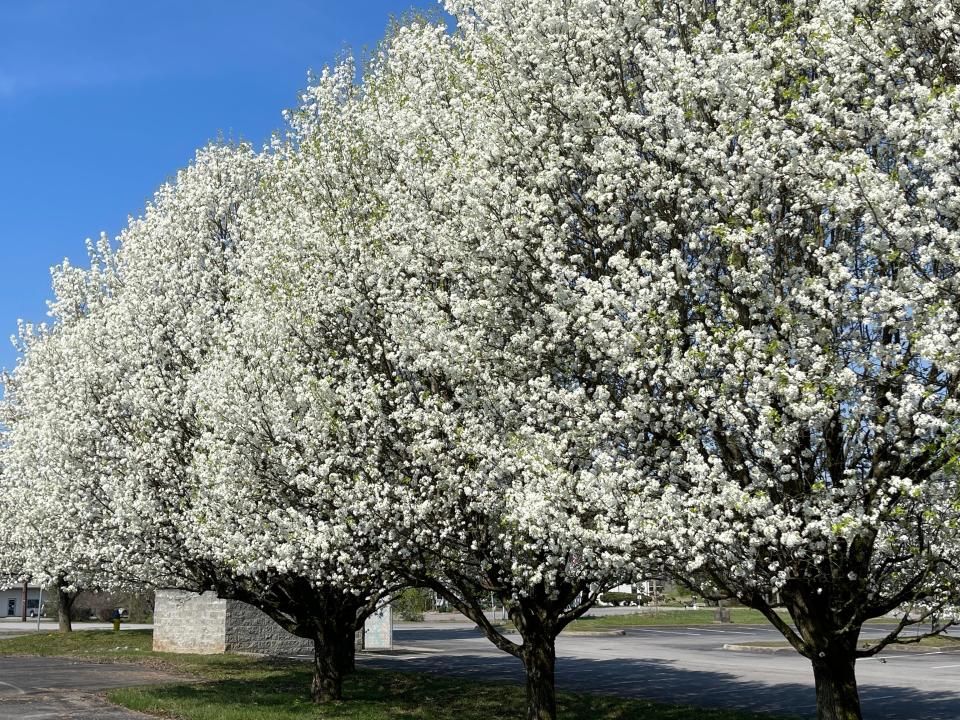
Those were the messages from Michelle Campanis, education coordinator at the University of Tennessee Arboretum, in her recent talk about Bradford pear trees to the Oak Ridge Institute for Continued Learning’s Friday Lecture class.
She noted that trees like the “straight” parent tree native to China and Vietnam (Pyrus calleryana), from which the Bradford pear tree is derived, are now sprouting and spreading to the forests, fields and farms in Oak Ridge and the Southeast. The Bradford pear tree is cross pollinating with other cultivars of the parent species; a cultivar is a plant variety produced by selective breeding.
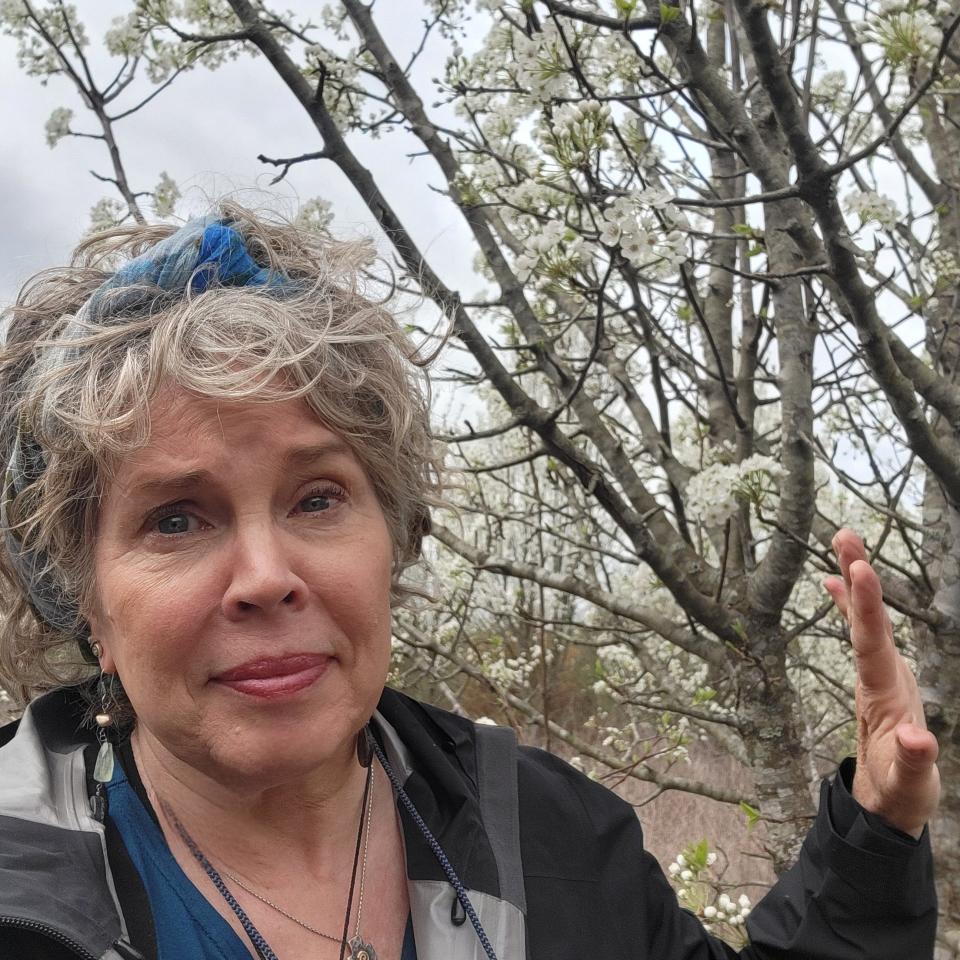
The problem is that some of the offspring plants are exhibiting some undesirable traits of the parent Callery pear tree, as it is called, Campanis said. These “volunteer” Callery pear trees are seeding themselves in alarming numbers even where they were not planted; they are helped along by birds who like to eat the trees’ fruit.
The volunteer trees have what was eliminated from Bradford pear tree cultivars – three-inch-long thorns that can puncture tractor tires. These trees can create dense thickets replete with sharp thorns that make hiking through the woods difficult. Even goats avoid these areas.
Planted in many eastern and southeastern states in the 1960s and 1970s, the Bradford pear tree lost its luster as a landscape gem in the 2000s when it was deemed an invasive plant in 29 states and Washington, D.C. In 2024, Campanis said, future sales of the Bradford pear are banned in Ohio, Pennsylvania and South Carolina.
In North Carolina and other states, she added, “some counties offer homeowners a bounty if they remove their Bradford pear trees. As a reward, they are given native replacement trees.”
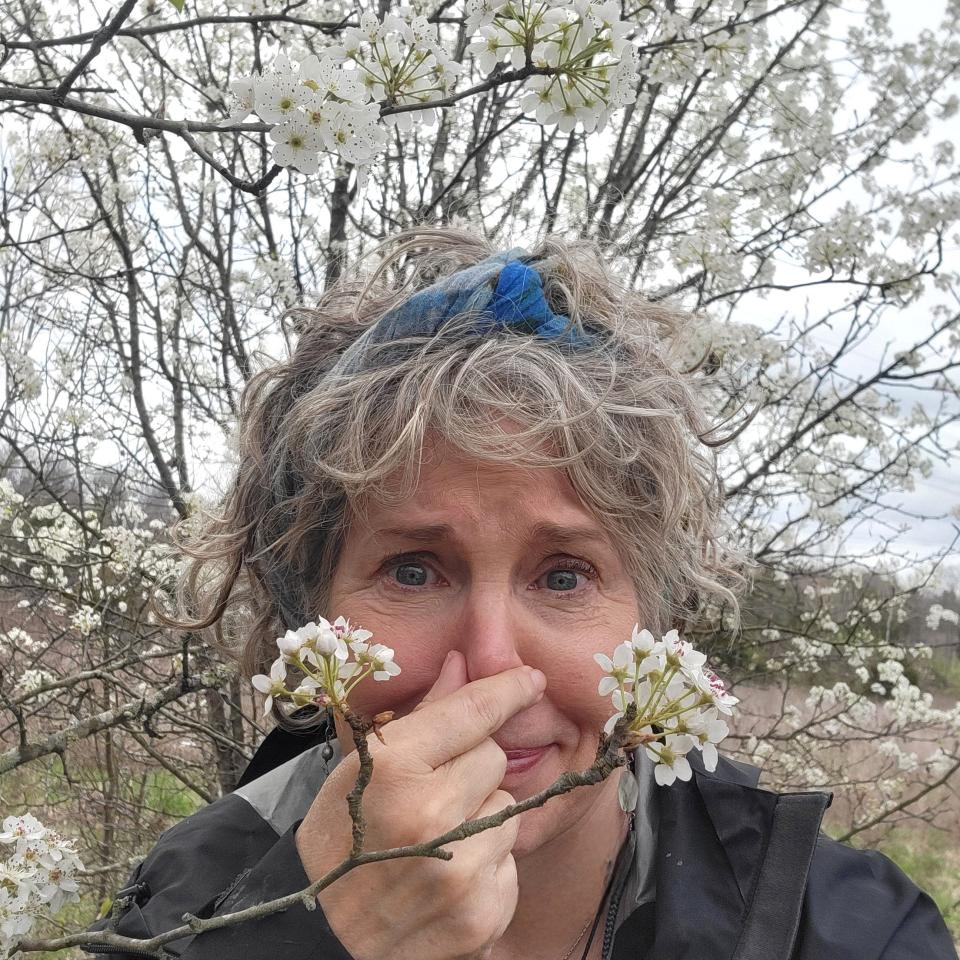
Get Bradford pear tree sales banned in Tennessee
Campanis recommended that Oak Ridge area residents help reduce the spread of Bradford pear trees by refraining from planting them and by removing them. She said each tree should be cut down and that the stump should be treated with an herbicide to prevent it from resprouting. She generally opposes the use of herbicides because of the harm they inflict on plants, insects, worms and shellfish in “our watershed" - except in this case.
She also advised the ORICL class attendees to contact local and state lawmakers and ask them to ban the sale of Bradford pear trees as other states have done or are considering doing.
“Tennessee has a big nursery industry,” she said, adding that nursery owners should be encouraged to produce and sell native plants and avoid buying and marketing invasive plants.
Other invasive species and Bradford alternatives
Campanis noted that Tennessee and other states have been plagued with other invasive plants imported from Asia such as kudzu, autumn olive and privet shrubs, Chinese and Japanese honeysuckle and Japanese stiltgrass.
The latter (Microstegium vimineum) was accidentally introduced into Tennessee around 1919 through shipments of porcelain from China in which the grass was used as a packing material; it has spread throughout the Southeast and is now found in 26 states.
Noting that redbud and dogwood trees are native species, Campanis said there are other native trees that bloom in the spring and display brilliant fall colors and they should be planted in place of removed Bradford pear trees.
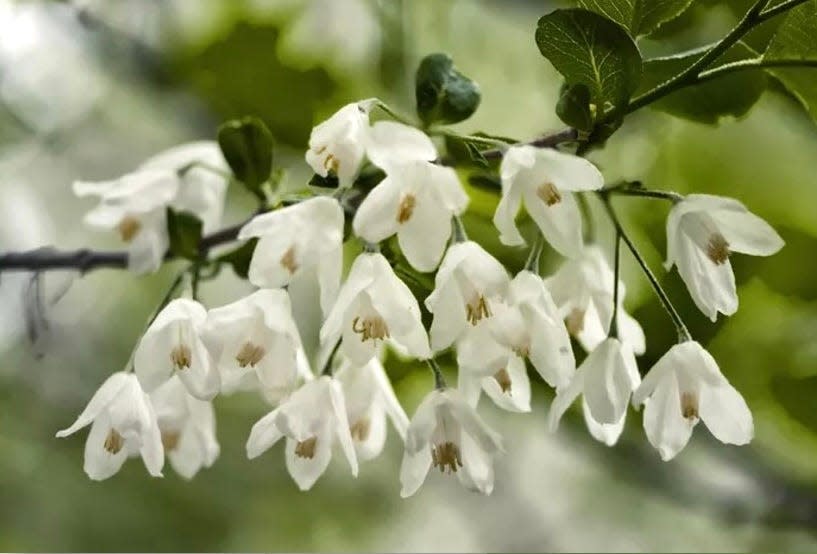
She listed the serviceberry tree, which produces an edible purple fruit; Carolina silverbells, “whose white April blooms look like little bells hanging off the tree and which grow really well with our native azaleas and rhododendrons,” and the fringe tree. This tree (Chionanthus virginicus), she added, “has showy white panicle blooms in May through June, is fragrant and has fruit valuable to the birds.”
Why were Bradford pear trees popular?
How did the Bradford pear tree become the darling of the landscapes in the eastern states? According to Campanis, the story began on the West Coast at the turn of the 20th century when fruit trees were dying from a disease called fire blight.
Frank Reiber, a plant scientist, searched for fire blight–resistant, fruit-tree seeds. In 1908 he found that Callery pear trees grown from imported Chinese seeds in a test orchard in Oregon resisted the fire blight. These healthy trees produced lots of fruit.
In 1918, Frank Meyer, a Dutch immigrant employed at the Missouri Botanical Garden, traveled to China as a plant explorer and collected over 5,000 pounds of Callery pears for seeds. They were hauled by horse and wagon and transported by ship to the United States. The seeds were used to make rootstock, the underground part of a plant from which new above-ground growth can be produced.
In the early 1960s the ornamental nursery trade recognized that Callery pear trees could be attractive for landscape use if selective breeding could produce a cultivar that eliminated the parent tree’s undesirable thorns and vulnerability to certain pests. The Bradford pear tree was the most promising cultivar developed at the U.S. Department of Agriculture Plant Introduction Station in Glenn Dale, Maryland. It was named in 1963 for its director, Frederick Charles Bradford. There are now 25 cultivars of the Bradford pear tree.
Horticulturists initially liked the tree because it is fast growing, inexpensive to produce and tolerant of difficult growing conditions, including high temperatures and drought. But in the 1980s many trees planted in the 1960s began to fall apart because of their weak wood and tight branching structure, leading to tree splitting during windstorms.
This century, Campanis said, horticulturists were surprised to learn that Bradford pear trees readily cross pollinate with other Callery pear varieties like the Cleveland Select and other cultivars. Some of the progeny revert to exhibiting the undesirable characteristics of the straight parent species that produce the thorns.
But the man behind the Bradford pear tree is admirable
Campanis, who claims to be fascinated by plant explorers, told the ORICL class about other contributions of Frank Meyer.
“In 1905, he was hired by the USDA Office of Foreign Seed and Plant Introduction,” she said. “He introduced over 2,500 plants that were documented in his lifetime, including the Meyer lemon, many stone fruits, peaches, plums, the first oil-producing soybean and the beautiful amber lilacs.
“He is the researcher botanist who confirmed that the chestnut blight that killed the American chestnut trees starting in the 1920s in the eastern U.S. forests came from Chinese chestnut trees. These trees were imported because they produced more nuts than the American species.”
The American chestnut dominated portions of eastern U.S. forests, providing nutritious nuts for indigenous populations and an excellent habitat for wildlife. Numbering nearly 4 billion, the American chestnut trees were among the largest, tallest and fastest growing of these forests’ plants.
Campanis said efforts are underway to bring back America’s regal tree. The American Chestnut Foundation is striving to develop a blight-resistant species.
Concerning each plant imported from Asia that turned out to be invasive, she said, “It seemed like a good idea at the time.” The lesson, she added, is that botanists thinking about importing plants from abroad should pause and ask themselves, “What are the long-term consequences?”
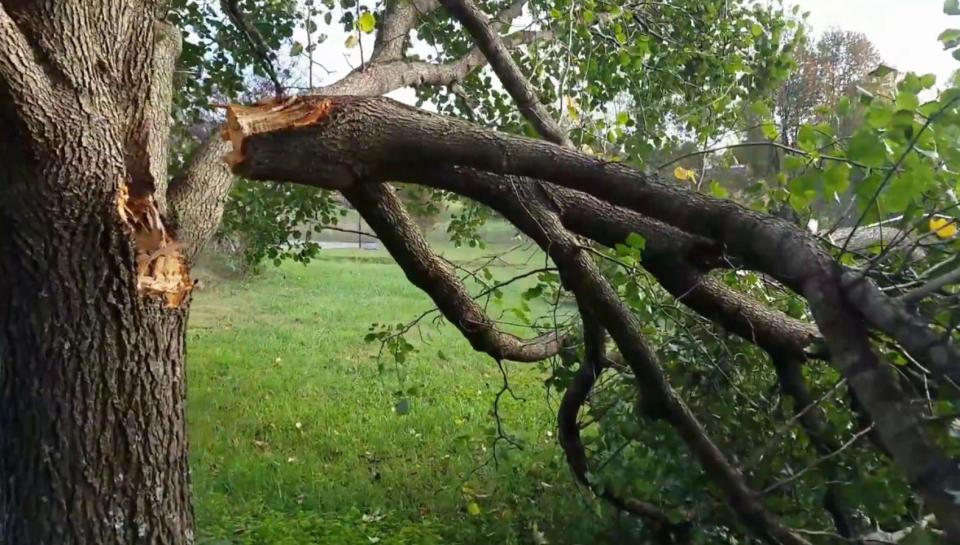
This article originally appeared on Oakridger: Bradford pear trees: Don't plant them, cut them down

